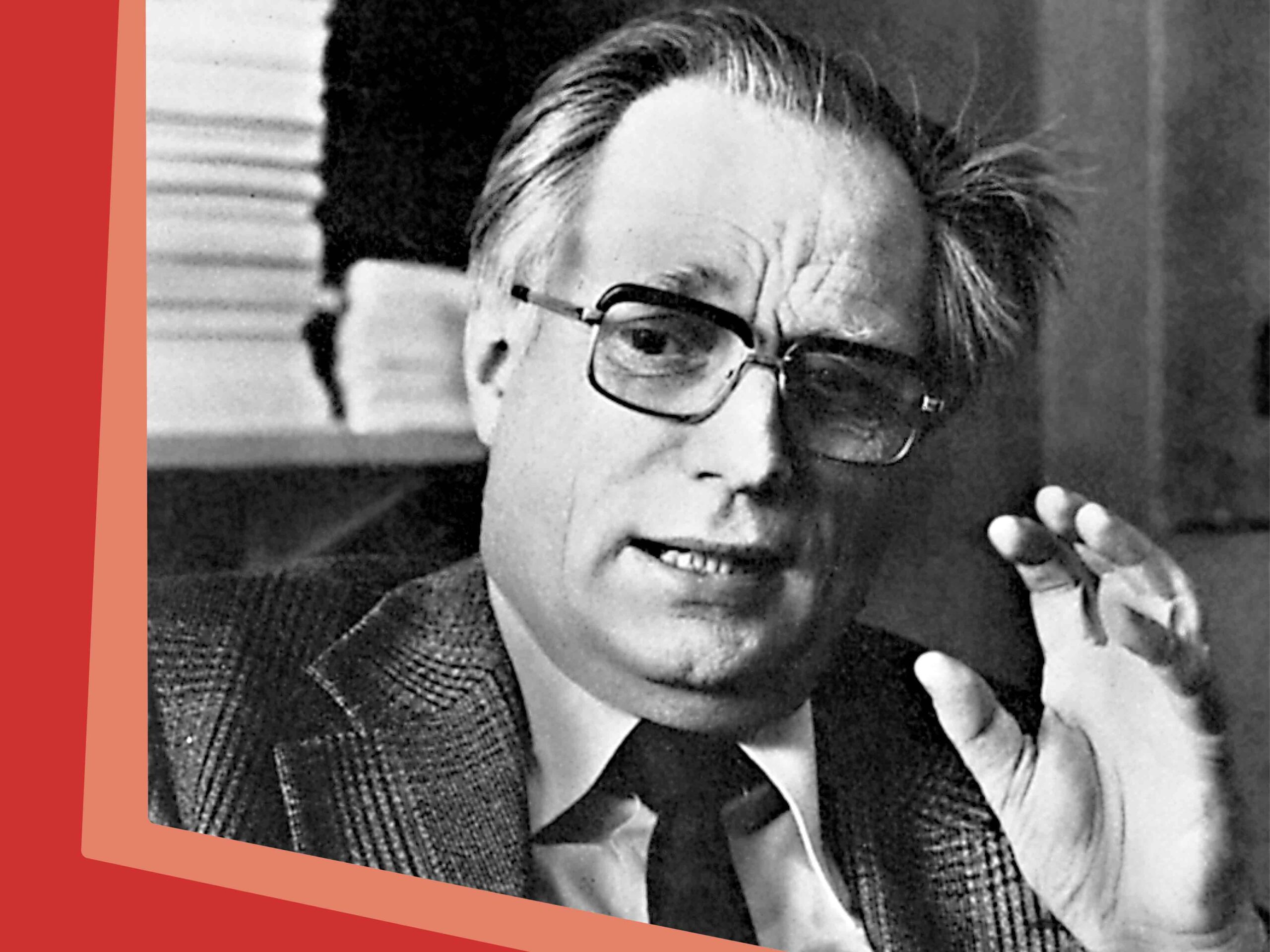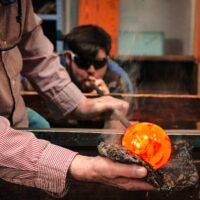Gerhard Kienle (1923-1983), founder of the Herdecke Community Hospital and Witten-Herdecke University, was as involved in politics and culture as he was in the Anthroposophical Society. This was a balancing act that, according to Kienle, should not have been one, and even today, it casts a harsh light on the self-centredness of the Anthroposophical Society.1
In July 1954, Kienle wrote in a letter about his work at the Tübingen University Psychiatric Hospital (under Prof Ernst Kretschmer): “Everyone knows that I am an anthroposophist, I make no secret of it, but everyone respects it, in a positive way.”2 In a letter to his group of friends, who were preparing the first anthroposophical community hospital, he had put it as follows three years earlier, in August 1951: “But simply building a new hospital to add to the many others cannot be considered justified. Every new institution is only justified if it is the expression of a new impulse, if a step forward has been taken at a human level. […] You can still expect a certain degree of sympathetic tolerance from others for the fact that you want to do medicine in a different way, likewise if you make a hospital which is intended to satisfy the need for anthroposophic medicine for certain groups—but we cannot expect tolerance that is any different from the tolerance that is shown towards Native Americans on their reservations. Such tolerance is always sentimental in character. This changes [however] at the moment when you place yourself within the problems of a particular sphere and are willing to renounce all personal emotional needs and commit yourself completely to solving the problems, not by proselytising about solutions, but by drawing the consequences from the questions. Such idealism is immediately understood and respected everywhere. Then respect will indeed also be shown for the fact that you represent anthroposophical ideas, even if they are incomprehensible to others. As soon as you put your emphasis on the questions and represent the anthroposophical ideas not as dogmatic prerequisites but as consequences, you will be understood and accepted at a human level! […] This is a consistent experience of mine: you can put forward the most spiritual things, they don’t need to be understandable at all, but they must be fundamentally justified in a factual idealism—then they will also be fundamentally acknowledged by people who are of a different opinion.”3 Rudolf Steiner proceeded in precisely this manner, albeit in his own way—he faced up to the concrete “problems” in areas of life (from medicine to agriculture and economics) and drew “consequences” from the questions; he did not “proselytise about solutions”, but practised a “factual idealism”—as can be seen comprehensively and in detail in his life’s work, if you really take the trouble to study it.4
Unconscious Anthroposophy
Gerhard Kienle was guided by this in his profession and in his public engagement under the conditions of the twentieth century. He sought out and found quite a few people who had “no conscious relationship with anthroposophy”, “although they serve the progressive forces with one side of their being”;5 he involved them and, time and again, had remarkable co-workers of non-anthroposophical provenance for his initiatives.
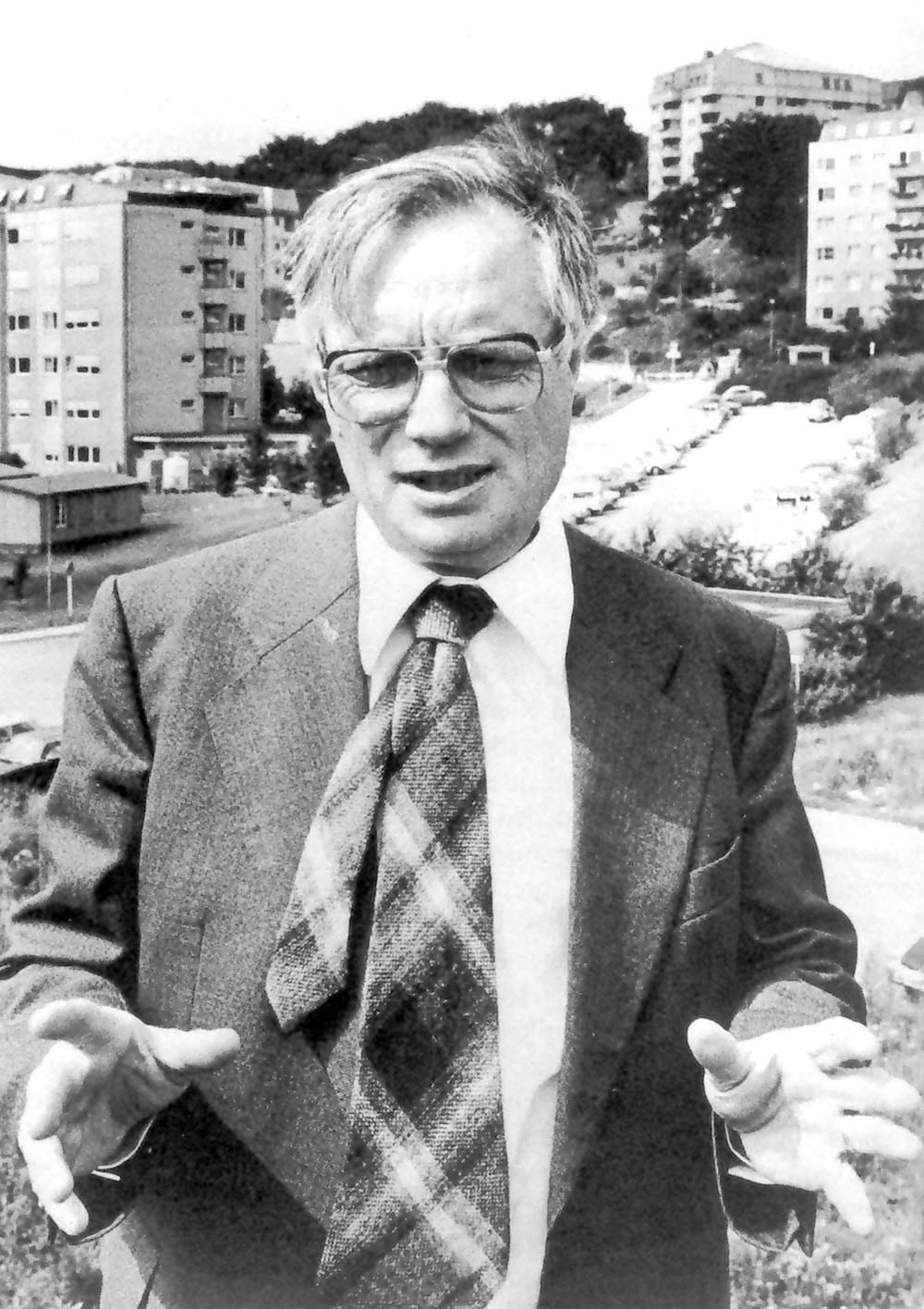
One of the many examples was the philosophically educated and humanistically motivated Protestant theologian Udo Fiebig (1935-2022), who worked as a pastor in a mining community in the Ruhr area and as a hospital chaplain, before becoming a member of the German parliament, the Bundestag, in 1969 and finally becoming the SPD parliamentary group’s spokesman on health policy issues. Fiebig, who kept his distance from anthroposophy, internalised Kienle’s ethical and social concerns with dynamic determination, outstanding intellect and eloquence. He practically became Kienle’s parliamentary “right hand” in Bonn—it was with him that Gerhard Kienle discussed and planned the next actions. In 1985, two years after Kienle’s death, the SPD man himself published Freiheit für Patient und Arzt. Das Selbstbestimmungsrecht des Patienten als Postulat der Menschenwürde [Freedom for Patients and Doctors. The Patient’s Right to Self-Determination as a Postulate of Human Dignity] with Verlag Urachhaus. “What the world expects of us is that we take its problems seriously and make a real contribution with effort and commitment. Then we will be a partner, then we won’t need to proselytise.” (Kienle)6
Gerhard Kienle knew what he was talking about. During the preparatory work for a new German medicines law, with mandatory double-blind trials in clinical studies, the outrage in many parts of the population towards “complementary medicine” made huge waves, and the end of homoeopathy, naturopathy and anthroposophic medicine seemed to be on the horizon in the early 1970s, with the threat of a total ban on their “ineffective” medicines. Kienle was one of the few who tackled the challenges with scientific tools. He familiarised himself with the scientific principles of pharmacology, medical statistics and clinical studies to such an extent that he not only gained respect in Bonn but was able to overturn the content of the draft law because it did not correspond to the living and developmental conditions of medicine (and threatened not only non-allopathic medicines but medicine itself). In addition, Kienle presented viable alternatives, indeed solutions, which were taken up.7
The Support of the Anthroposophical Society
He had the stature, but also the will and selflessness required for such an approach. “We must not go and say, ‘read what it says about threefolding; it’s all explained there.’ Anyone who is not capable of being the finance minister themselves should refrain from speaking. They should first work diligently until they can do that. We must not underestimate this side. We ourselves must also apply diligence in working to understand these things.”8 For anthroposophists, it was not just a matter of making demands and advocating fundamental, opposing positions, but of assuming co-responsibility in the public sphere. Gerhard Kienle spoke about this on April 11, 1976, at the annual general meeting of the Anthroposophical Society in Dornach, almost half a century ago.9 The Anthroposophical Society was important to him – as a group of people who, in the meaning of the karma lectures, had agreed through destiny to bring the Michaelic impulse into civilisation. Kienle was intensively engaged with the Anthroposophical Society, was active for years on the German national executive council despite his heavy medical workload, sent copies of his most important correspondence in the discussions about the Herdecke Community Hospital, the German medicines law and Witten-Herdecke University to Dornach, was in dialogue with the members of the executive council there and would also have been prepared to join the leadership of the Medical Section.
He had profoundly understood and internalised the form of a “viable” Anthroposophical Society and the shape of the School that Rudolf Steiner had envisaged at the Christmas Conference in 1923/24. Kienle valued the Anthroposophical Society despite its weak points, and he also needed it for his prominent, difficult work; he needed a Michaelically minded society that recognised and promoted the individual in their work—that backed, affirmed and supported them. Kienle was aware of the many destructive processes in the history of the Society and was of the unequivocal opinion that, given the situation of the time, something else was now needed, and urgently so. In 1975, at the annual general meeting in Dornach, he said that it was important to be aware of the common ground internally in anthroposophy: “Anyone who wants to work with responsibility must have certain backing and a certain calm, otherwise they cannot do it […]. The membership must stand protectively behind those who do such work. Otherwise, we won’t make it; otherwise, things will become really life-threatening.”10
Misconceived Esotericism
Kienle was attacked not only by aggressive orthodox physicians but also by members of the Anthroposophical Society: why did he get involved at all with the Bonn parliamentarians and health authorities, with the proposed “Ahrimanic” legislation, the structures and powers? Many completely denied him the status of an “anthroposophist” and any spiritual and esoteric profile. “It’s very hurtful when people say: That’s not what real anthroposophy is about, it’s so outwardly political…”11 Kienle knew what he was doing with his commitment to medicine and society, what was at stake and what forces were at work in this spiritual debate. In his last Dornach lecture on “The Interaction of Raphael, Michael and Buddha in Medicine” on October 5, 1981, he explained this in detail;12 but he had already said at the 1976 annual general meeting: “What has now come over us worldwide as a current, as state-of-the-art science, is a body of thought that is not thought individually. It is overwhelming people like an epidemic. Nobody has an individual judgment. It is dominated by the abnormal spirits of personality, which are actually spirits of form, the antagonists of the spirit of the time. We understand our task correctly, I believe, when we work in such a way that we try to penetrate this element of thought and wrest it from the illegitimate spirit of the time and connect it to the legitimate spirit of the time, for which it is true that it works in the outside world and quietly stimulates thought. This element of thought must be presented to the right hierarchy, and if we do this with full consciousness, we can work all the way into the outer world.”13
Gerhard Kienle, however, found only limited understanding for this in the Anthroposophical Society and movement; despite the karma lectures and all Steiner’s other endeavours (right up to the groundbreaking Leading Thoughts), he saw the “awareness of the common ground” as only weakly developed in the Society, and people were moving further and further away from “mutual human appreciation”. Outstanding work and achievements were barely recognised because there was an absence of interest and caring, often due to a lack of engagement with the world and a lack of existential interest. Rudolf Steiner had already described this very precisely in 1923, and not only regarding the disregard of Lilli Kolisko.14 In January 1979, Kienle wrote to the council of the Society of Anthroposophical Physicians: “If we lose sight of the tasks to be accomplished and instead enter into the personal, petty warfare that used to be so popular in the Society […] our community must disintegrate.”15 The question arose, said Kienle, in 1982 at a members’ meeting of the German National Society, whether one had to “fall silent” on the “fundamental questions” of the current situation. Instead of supporting the individual from out of the forces within the community wrestling for knowledge, they were weakened. “At the moment, we have an extremely effective division of labour, where some have to do the work and others have the reservations, above all fundamental, anthroposophical ones […]. There is a very serious problem here with the way we see ourselves. How do we treat people who do particular work for us? Will there even be any co-workers left for these vital tasks in the future?”16
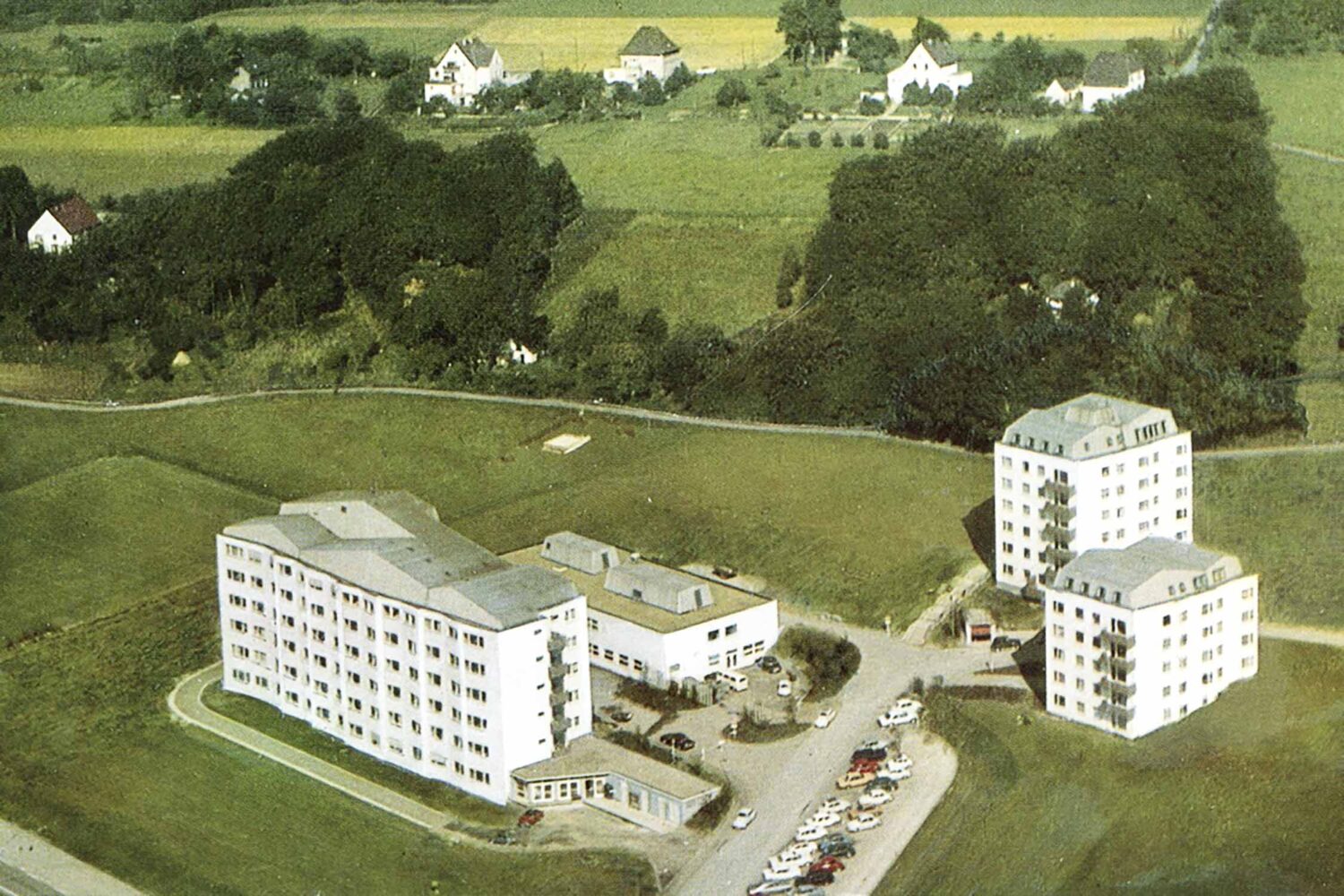
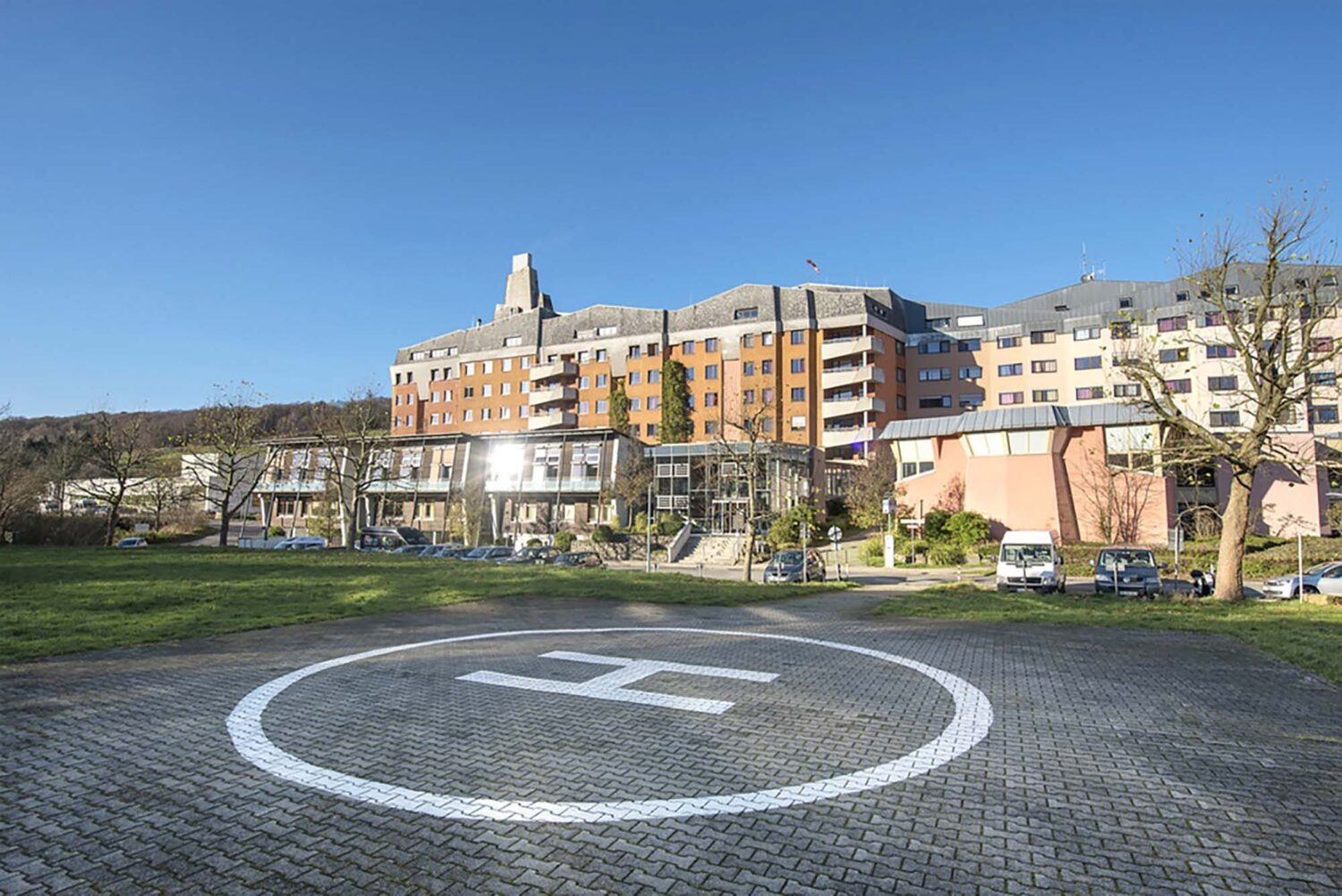
Herderke Community Hospital, 1970 and 2023
Playing with Tin Soldiers
Only if the Anthroposophical Society played a positive part in the conflicts would it be possible to deal with the Ahrimanic forces of destruction that are increasingly gaining a foothold in civilisation. “We have to solve the questions of the free intellectual life; the answers must be truthful. The other’s individuality, the acceptance of the will of the other, must take shape and become a social reality among us. Only if we really take these issues seriously will we have a chance to counter these forces that are now coming at us in a destructive way—through health policy and in social matters, and which want to destroy people in soul and spirit—so that central Europe is not totally destroyed. It is necessary that something arises in us as an inner creative force that brings destruction into balance with future forces.”17 At Christmas 1982, just two months before his acute illness that put him in intensive care and led to his death, Gerhard Kienle in his position paper “Die Bedeutung der Anthroposophie für die Neugestaltung des Universitätslebens” [The Significance of Anthroposophy for the Reorganisation of University Life] developed concluding thoughts on Rudolf Steiner’s warning to the Anthroposophical Society about slipping into “sectarianism” and simply going it own way “in a certain sense with blinders on, without looking to the right or left in the face of such major events of the present”. Kienle questioned whether this had really changed in the ranks of the Society after the Christmas Conference and wrote: “It is relatively easy to find people who need anthroposophy. This is also the reason for the constant temptation for grandstanding without being measured against the great tasks of humanity. It is our duty to find the leading, creative personalities and to promote them in such a way that they can realise their task in the great struggles. Today’s public, political, economic and cultural life is impoverished of personalities who would be able to reshape the current conditions from the ground up.”18
With regard to critics within the Anthroposophical Society, he went on to say: “Those who are accustomed to speaking in the internal domains of the anthroposophical movement, without ever having penetrated the esoteric circle of scientific debate and having to defend their own positions, cannot as a rule form any idea of what such demands and debates mean in human and intellectual terms. It is possible only in the internal domain to give important presentations, noting that this is done on the basis of spiritual science. The world looks completely different, however, when you enter the actual contest of opinions with anthroposophical positions that claim to be rigorously scientific. Playing with tin soldiers simply isn’t the same as a real war.”19
When Kienle spoke of the “esoteric circle of scientific debate”, he did not do so ironically, but in the sense of the remarks by the Polish microbiologist, sociologist of science and Auschwitz survivor Ludwig Fleck (1896–1961)20—and in the sense of Rudolf Steiner, who had said in a lecture at the end of January 1924, four weeks after the Christmas Conference: “Life is indeed quite esoteric. And you wouldn’t believe how much esotericism lives in a university laboratory, except that the professors and assistants know nothing about it. But it lives there nonetheless. After all, the esoteric does not consist of despising things and then just cultivating what you happen to like—the esoteric consists of engaging with life and its depths in the most forceful way.”21
In Kienle’s Spirit
How Gerhard Kienle would have assessed developments in the anthroposophical movement, the Anthroposophical Society and its School of Spiritual Science since 1983, the time of his death, let alone those in civilisation in general, in the sciences, society, economics and politics, I cannot say. A great many things in the world have become far more difficult and abysmal since 1983 and Rudolf Steiner’s prediction of July 1924, that the world could find itself at the “grave of all civilisation” at the end of the twentieth century, has gained not only plausibility but tangible reality, presence and urgency. However, as Steiner said in the same context, the “beginning” of that age might also be reached “where in the souls of people who combine intelligence with spirituality in their hearts, the Michael battle is fought out to the advantage of the Michael impulse”.22 Perhaps both are possible, for which there seems to be some evidence—the “Michael impulse” becoming effective in the spiritual intelligence of the heart at the “grave of all civilisation” or in its vicinity.
I believe that Gerhard Kienle would see many things in a positive light with regard to the anthroposophical movement, the Anthroposophical Society and its School of Spiritual Science, insofar as I understand the history of his life and work correctly. At least from a cosmopolitan perspective, anthroposophy and the anthroposophical movement have become more widespread, despite the growing power of the “prince of this world”. Every year, new translations of the basic anthroposophical works are published in all world languages, and the methods of anthroposophical education, agriculture and medicine continue to spread against considerable resistance. And by no means at the expense of their spirituality, as can be seen time and again at major specialist conferences at the Goetheanum, most recently in the example of biodynamic agriculture, with almost 1000 people from all over the world.
I also assume that Gerhard Kienle would have very much welcomed some of the developments in the Anthroposophical Society in recent decades, including its steps towards becoming a real world society and the efforts of numerous country societies and the Dornach leadership to assist, promote and support anthroposophical initiatives and institutions as a society. I think Kienle would also have seen the many processes of self-organisation in the country societies in a positive light, as well as the creative power of the active involvement of so many members and their will to travel from afar with great effort to the Goetheanum for overarching events that affect the worldwide society—such as the events marking the centenary of the destruction of the first building, the World Conference at Michaelmas 2023 and the Christmas Conference 2023/24, each with a fully packed Goetheanum. During his lifetime, Gerhard Kienle tried to be present at such gatherings in the spirit of a shared reflection on destiny.
I think he would also consider many developments within the School of Spiritual Science to be pleasing, first and foremost the reconsideration of the way the Christmas Conference viewed the School. The School, which was conceived by Rudolf Steiner and which got underway through him and his co-workers, was and is based on a spiritual training path that is further specialised in the specialist areas (sections); it is an institution for research, teaching and training in general anthroposophy and in the areas of life, a place from which impulses for change in medicine and education, social life, economics, science, art and religion should originate. They also do so in the sense of a world-connected esotericism that does not take place in closed circles but in the penetration and transformation of the aforementioned areas, the human lifeworld. Steiner’s understanding of the term research was by no means limited to methodological insight into the spiritual world, but also encompassed spiritually appropriate cognitive work in all areas of life and science using a variety of methods inherent in the subject area. I assume that Gerhard Kienle would have enjoyed the growing understanding of this concept of the School23 – including the more than 500 new School members every year, many of whom seek admission in order to better fulfil their professional work in the world, and indeed to be able to survive spiritually in this work with others.
Gerhard Kienle, as I got to know him retrospectively in his biography, would also have enjoyed the increasing, equally worldwide collegiality in the sections; important work carried out in one place is now publicised internationally in many languages by the Goetheanum’s specialist departments. The specialist conferences at the Goetheanum benefit significantly from this perception of the achievements made; the School is active worldwide in research, teaching, training and initiatives. “The second thing is that this Goetheanum has the secondary title ‘School of Spiritual Science’ and that there is a pretension to demonstrate scientific achievements. No matter how great the opposition, these people must not be right. It is impossible to overcome this opposition by building a Goetheanum, this School of Spiritual Science, when it can be pointed out that nothing is being achieved scientifically.” (Steiner)24
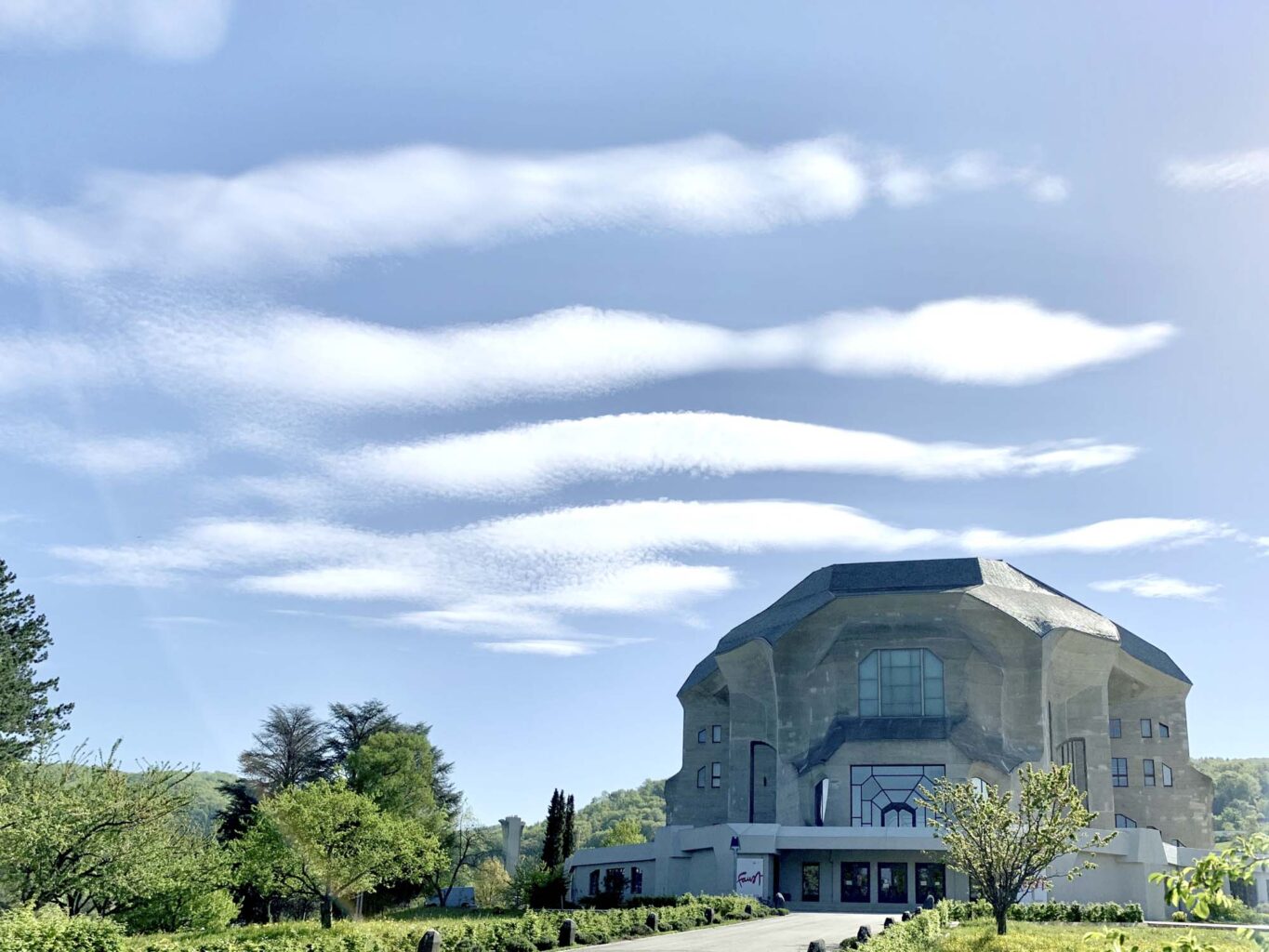
The Power of Alienation
In contrast, I am sure that Gerhard Kienle would have taken a critical view of some points. This concerns the continuing extent of the destructive criticism of people who have taken on responsibility in the Anthroposophical Society, the School and the anthroposophical movement, often with an almost total misjudgement of the tasks and requirements that these people are faced with. In my opinion, Kienle would also be shocked by the lack of interest in the professional work of the sections that still exists in some circles of the Anthroposophical Society, the overestimation of themselves and misjudgement of others, and the failure to recognise important, world-connected activities, while dedicated individuals continue to be subjected to criticism of all kinds with recourse to quotations from Rudolf Steiner. Yet Steiner had made it so clear what he originally hoped for and expected from the members of the Society themselves25—from the well-founded correction of the defamation of anthroposophy in the media to active, shared engagement for anthroposophical initiatives and institutions in the world.
The inward focus of the Anthroposophical Society and its endless internal social process troubled Gerhard Kienle during his lifetime and would very probably continue to do so. Not so long ago, in a brochure distributed in several languages by members of the Anthroposophical Society (“Future of the Culture of the Anthroposophical Society within the Framework of the Members’ Forums at the Goetheanum” working group), there was talk, among other things, of founding a “School of Spiritual Research” at the Goetheanum and elsewhere, to be distinguished from the existing “School of Spiritual Science (First Class)”. The term “school” was being used misleadingly at the Goetheanum, no significant work was being undertaken in research, teaching and training; on the contrary, the establishment of an “actual School of Spiritual Research” based on supersensory experiences was being blocked by the existing institution, which was also self-replicating in terms of staff, bypassing the membership.
In my view, such disregard for Rudolf Steiner’s entire School concept (“School of Spiritual Science (First Class)”) and failure to recognise many positive developments enabling the future in the training course of the First Class and within the specialist sections, is as serious as it is dangerous. If Rudolf Steiner had really been interested in “clairvoyant” section leaders and co-workers, how he filled the positions would have been a mistake. Neither Ita Wegman nor Marie Steiner, Elisabeth Vreede, Guenther Wachsmuth and Albert Steffen claimed such abilities for themselves; which does not mean, however, that they did not have imaginative, inspirational and intuitive possibilities of experience and action, like many of the co-workers in Rudolf Steiner’s anthroposophy at that time and today.
Translation Christian von Arnim
Footnotes
- On Kienle’s life [in German] see: Peter Selg “Gerhard Kienle” in Das Goetheanum, No. 46/2023. At the time, a follow-up essay on Kienle’s relationship with the Anthroposophical Society was announced, which is now happening.
- Quoted from Peter Selg, Gerhard Kienle. Leben und Werk [Gerhard Kienle. Life and work], volume 1 (Dornach, 2003).
- Ibid.
- See i.a. Peter Selg: Rudolf Steiner. 1861–1925. Lebens- und Werkgeschichte [Rudolf Steiner. 1861–1925. History of his life and work], seven volumes (Arlesheim, 2017).
- G Kienle to R Grosse, October 17, 1979. Quoted from Peter Selg, “Gerhard Kienle”, in: Anfänge anthroposophischer Heilkunst [The beginnings of the anthroposophical art of healing], (Dornach, 2000).
- G Kienle: “Ansprache auf der Generalversammlung der Anthroposophischen Gesellschaft” [Address at the Annual General Meeting of the Anthroposophical Society], Dornach, April 11, 1976. Ibid.
- See Peter Selg, Gerhard Kienle. Leben und Werk [Gerhard Kienle. Life and work], volume 1.
- Quoted from Peter Selg, “Gerhard Kienle”, in: Anfänge anthroposophischer Heilkunst [The beginnings of the anthroposophical art of healing].
- Ibid.
- Ibid.
- G Kienle, “Ansprache auf der Generalversammlung der Anthroposophischen Gesellschaft” [Address at the Annual General Meeting of the Anthroposophical Society], Dornach, April 11, 1976. Ibid.
- In Peter Selg, Gerhard Kienle. Leben und Werk [Gerhard Kienle. Life and Work], volume 2 (opening lecture of the conference “The spiritualisation of the art of healing in the present”, at which Madeleine van Deventer, Herbert Sieweke, Bernard Lievegoed, Rita Leroi and Gisbert Husemann, among others, also spoke).
- In Peter Selg, Anfänge anthroposophischer Heilkunst [The beginnings of the anthroposophical art of healing].
- See most recently Peter Selg, “Das Ringen um die Anthroposophische Gesellschaft der Zukunft” [The struggle for the Anthroposophical Society of the future], in: Die anthroposophische Weltgesellschaft und ihre Hochschule [The anthroposophical world society and its school], (Dornach, 2023).
- In Peter Selg, Anfänge anthroposophischer Heilkunst [The beginnings of the anthroposophical art of healing].
- Ibid.
- Ibid.
- Ibid.
- Ibid.
- Ludwig Fleck, Entstehung und Entwicklung einer wissenschaftlichen Tatsache [The genesis and development of a scientific fact], (Frankfurt a. M., 1980).
- Rudolf Steiner, Die Konstitution der Allgemeinen Anthroposophischen Gesellschaft und der Freien Hochschule für Geisteswissenschaft. Der Wiederaufbau des Goetheanum (1924–1925) [The Constitution of the General Anthroposophical Society and the School of Spiritual Science. The Reconstruction of the Goetheanum (1924-1925)], GA 260a (Dornach, 1987).
- Rudolf Steiner, Karmic Relationships 6, CW 240 (Forest Row, 2009).
- See i.a. the portrayal of the same in Peter Selg, Die Freie Hochschule für Geisteswissenschaft und die Michael-Schule [The School of Spiritual Science and the Michael School], (Arlesheim, 2014).
- Rudolf Steiner, Das Schicksalsjahr 1923 in der Geschichte der Anthroposophischen Gesellschaft. Vom Goetheanumbrand zur Weihnachtstagun [The Year of Destiny 1923 in the History of the Anthroposophical Society. From the Goetheanum Fire to the Christmas Conference], GA 259 (Dornach, 1991).
- See most recently Peter Selg, “Das Ringen um die Anthroposophische Gesellschaft der Zukunft” [The Struggle for the Anthroposophical Society of the Future], in: Die anthroposophische Weltgesellschaft und ihre Hochschule [The Anthroposophical World Society and its School], (Dornach, 2023).

